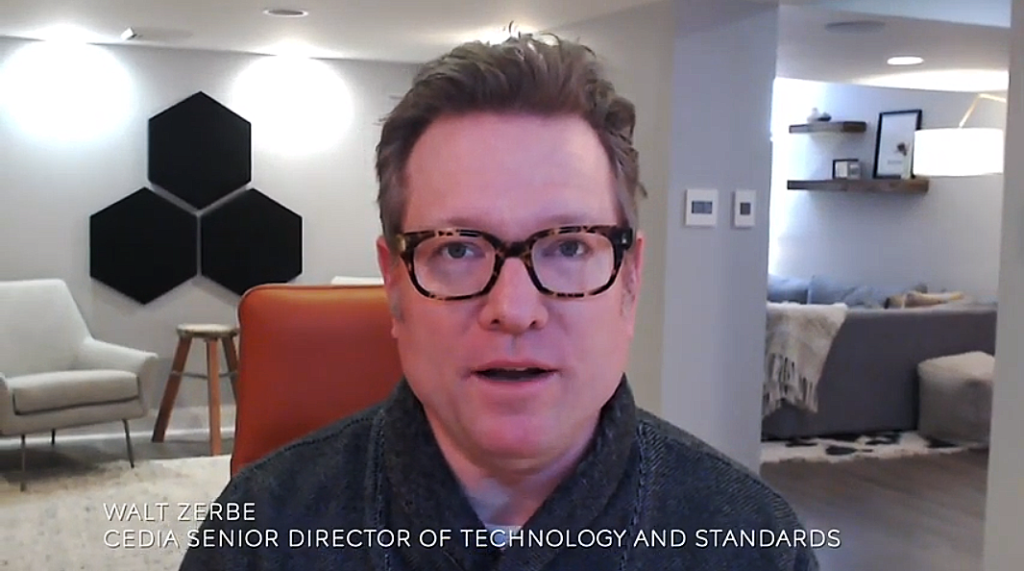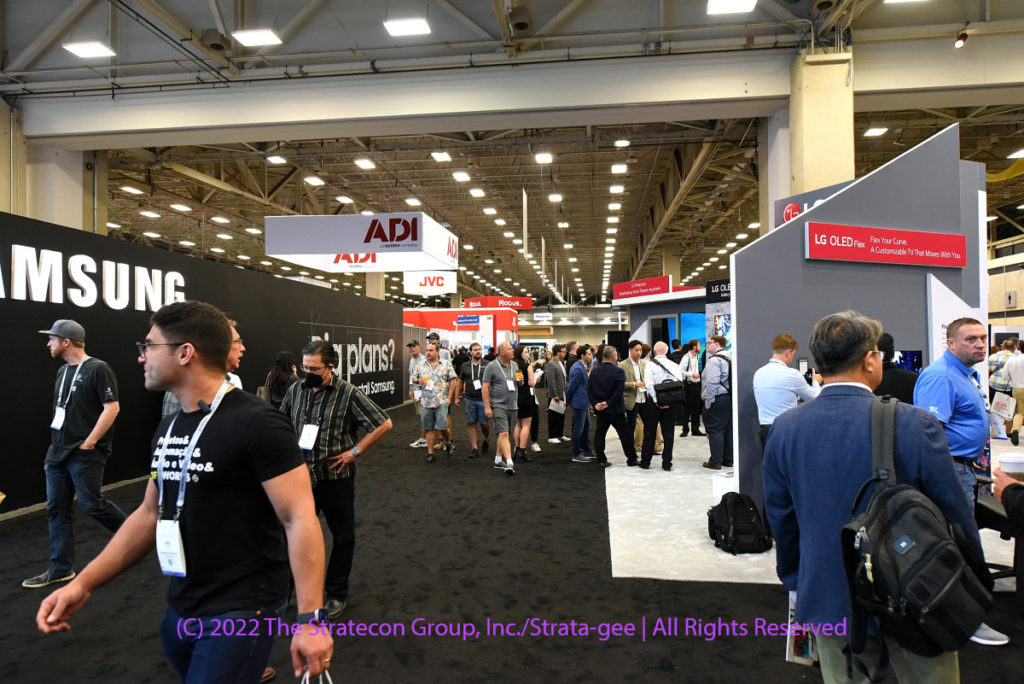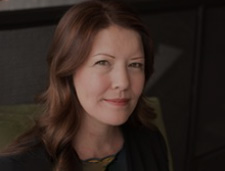
Why Did an Anonymous Source Call My Attention to the Bylaws?
On Tuesday, CEDIA members received an email from David Weinstein, the well-known VP of Lutron who also serves as the Chairman of CEDIA’s Board of Directors, informing them that the election process to fill vacant seats on the Board of Directors was now open. There are three seats to be filled and Weinstein’s email helpfully/confusingly names just three candidates the Board’s Governance Committee has selected to fill the three open seats. It was the first indicator that something was different with this election as compared to the usual process.
I read this announcement carefully, as only hours before it was distributed I had received a cryptic message from a source exhorting me to find and read “the current Cedia [sic] bylaws.” Something was definitely brewing…
See more on the CEDIA Board elections…
Unless you paid careful attention to the words that Weinstein chose, the announcement could seem confusing. Normally, there are several candidates whose profiles are provided to members and from which they can peruse and make their choice for whom they wish to vote. Normally, there are more candidates than available positions, allowing members to make the final selection. As per the Bylaws, the winning candidates to join the Board “…shall be elected by a plurality of the votes cast by the members.”
Surprise! A Different Election Process
But this year, unbeknownst to members, the process appears to have been changed. Weinstein’s email refers to “…the 2023-2025 slate of new members selected to serve on CEDIA’s Global Board of Directors.” [emphasis added] Did you see that word “slate”? Apparently, the Board’s Governance Committee (GC) has pre-selected the three specific candidates for the three open Board slots – offering a proposed “slate” of Board candidates for member approval (or disapproval).
All members need to do now is simply give a “yes” or “no” vote (sometimes known as an “up” or “down” vote) for the entire slate. If more members vote for the slate than against it, then these individuals will be your new Board members. There is no information provided as to what would happen if more members voted against the slate than for it. Presumably more candidates would be sought and presented in the future. However, it seems unlikely that outcome would occur.
The Slate Approach is a Big Change
More likely, most CEDIA members will not vote at all. According to the head of the GC, Jamie Briesemeister, historically only about 4% -to- 4½% of members actually vote in Board elections. Those not participating in this election will not have their vote counted one way or the other. Only those proactively voting either for or against the slate will have their vote counted.
This slate approach is a big change. But where did it come from?

Board Explains Change via Podcast
CEDIA has published a special podcast to explain this major change. On the podcast was host Walt Zerbe, CEDIA Sr. Director of Technology & Standards; David Weinstein, CEDIA Chairman of the Board of Directors; Jamie Briesemeister, CEDIA Vice-Chairman of the Board of Directors and Chairman of the Governance Committee; and Daryl Friedman, CEDIA Global President & CEO.
As Chair of the GC, Briesemeister was really the focus of this podcast. Briesemeister noted that there were more than 20 candidates from around the world for the three open Board seats. As the GC considered how to proceed with vetting, the topic of switching to a slate process rather than the usual candidate-by-candidate approach came up. She admitted that, at first, she was very much opposed to it – noting that she herself had been elected to the Board under the old system.
Then I learned how complex, confusing, and challenging our charter and bylaws make the selection process – often-times eliminating great candidates because they didn’t check the box with someone’s personality or fits in a certain geographic location of the world. I think we can all agree this isn’t how the governance committee should make decisions.
So we went with a slate approach. This will allow the Governance Committee – and has allowed us – to look at the big picture and find candidates that will create a well-rounded Board with skill-sets the Board will need for the next three years.
Jamie Briesemeister, CEDIA podcast “‘Special Edition’ CEDIA Gov’t & Governance Vote”
A Thorough Vetting Process
Briesemeister went on to add that the slate has been thoroughly vetted, with GC members interviewing all of the candidates (except for one, due to timing differences). The interviews were done in many cases with the whole committee present, something which has never been done before, she noted.
“Only a few candidates were strategic in nature,” Briesemeister noted. “It’s why we’ve chosen a slate approach, one that makes it fast and easy for the membership to vote knowing that a lot of the hard and detailed work ahead of the slate has already been done…with one CEDIA in mind, 100%”
Four Reasons for the Change Were Offered
Interestingly, Briesemeister offered three explanations for why a slate approach was chosen: 1) Because of CEDIA’s confusing charter and bylaws; 2) Because so few members vote in Board elections, noting that 4% vote rate means “158 members decide the fate of 3,500 members. CEDIA’s future requires a different approach.”; and 3) Because “Only a few candidates were strategic.”
In other words, CEDIA’s Board is telling members that they are freed of the responsibility of having to review profiles of multiple competitive candidates in order to select the subset of the total that they prefer. Instead, the GC has vetted the candidates and presented to members only those they feel best fit the bill. All you have to do is agree with them…and we’re done.
Do you like that process better?
Anonymous Source – It’s All About the Bylaws
Hours before the official announcement of the opening of voting for Directors, I received outreach from an anonymous source upset about this change to the CEDIA Director election process. This source was not a candidate for the position but was aware of the fundamental change the Board had secretly made to the process. It is also possible this source was friendly with potential candidates running for a Board seat, who were unsuccessful.
He called the apparent behind-the-scenes change in the election process “the most shady Association thing ever.” I ultimately spoke with multiple sources who were either upset with the change to a slate process, or with their perception of the Board’s secretive manner in which it was done.
The Board ‘Must Have’ Violated the Bylaws
Multiple sources alleged that the Board MUST have changed the Bylaws to provide for this different “slate” election process, as opposed to the normal electoral process practiced by the Association for decades. And if the Board changed the Bylaws with no notification to the members, these sources allege THAT is a violation.

In the alternative, they asserted that the Board must have violated the Bylaws by denying the right of the membership to choose their favorite candidate from a list of multiple pre-vetted candidates.
So DID CEDIA Violate Their Own Bylaws?
I was able to locate a previous version of the Bylaws to see how it described the process. But for the purposes of this post, I wanted a more updated version. I searched the CEDIA website where I’ve seen the Bylaws posted before and was unable to locate it at this time.
I reached out directly to CEDIA to request the last three sets of Bylaws. While I have yet to receive all of my requested versions, they did provide me with the most recent version. This version, the Association said, was modified in February 2022 with “minor edits.”
The Dissenters Got It Wrong
From my cursory review of now three different versions of the Bylaws, I can say with some conviction that the voices of dissent have apparently gotten it wrong. It does not appear that the association has violated the letter of any particular section of the Bylaws.
Let’s dig into this a little deeper…
This latest version of the Bylaws, titled – Amended and Restated Bylaws of Custom Electronic Design & Installation Association Inc. (footnote file I.D. US.133600327.06) – provides for Director elections in Section 3.3…same as in the previous versions of the Bylaws I have seen. As directly addressed, this section on Director elections has not really changed in any substantive manner over the various versions.
There are two types of Directors – elected and appointed directors. The following pertinent section defines these terms…
- Section 3.2 (a) “At all times, a majority of the members of the Board of Directors shall consist of Elected Directors”
- Section 3.2 (b) “An Elected Director must be an employee or principal of an Integrator member”
- There is no specified definition for an Appointed Director in the Bylaws, but historically, they’ve been from the CEDIA-associated manufacturing community
The Election Process in the Bylaws
Turning to the issue of elections, the wording in the Bylaws is sparse and open to interpretation.
- Section 3.3 (a)(i) “Election of Elected Directors. The Elected Directors shall be elected by a plurality of the votes cast by the members in person, by written ballot, or by proxy. Despite the expiration of an Elected Director’s term, the director continues to serve until a successor is elected and qualifies, or until there is a decrease in the number of directors.” [Emphasis added]
Much of the rest of Section 3.3 deals with the issues of ensuring the representation of the global, non-U.S. CEDIA community, Director terms, committee and council issues, and more. There is nothing more…or more specific…about the election process itself.
No Specific Election Process is Specified in the Bylaws
So as you can see, the election process itself is not specifically defined as one that offers members the right to vote on individual candidates. Furthermore, there is no prohibition against the Board offering a preselected slate of candidates – as long as members are offered the opportunity to vote on that slate.
On top of this, CEDIA representatives tell me the Association has used a slate approach in the past. Apparently, back in 2016 when then-CEO Vin Bruno set the goal of driving globalization by the subsumption of CEDIA U.K. into the Association, a slate was proposed. This was probably done due to the fact that U.S. members would have no idea of which U.K. candidates to vote for.
This is the ONLY time in its history up until now when CEDIA took a slate approach. For that reason, I don’t really view it as a normally employed option.

What May Be the Real Source of Discontent in This Process
I think the real problem here is one the Association has struggled with for years – an apparent lack of transparency. While it appears to be true that CEDIA’s Board did not violate the letter of the Bylaws, there certainly is a number of people who believe that, in this process, they’ve violated the spirit of a member-focused trade association.
There was no warning that this year, the election process would be a different one. That decision wasn’t revealed until the elections were opened.
The fact is, while the GC says this slate approach makes the voting process easier for members, it actually does that by limiting your choices. It’s either these three candidates together or none of them. What if you like one, but not the other two? Too bad, you either vote them all in…or reject them all.
Solving the Wrong Problem
On top of this, I have documented for years the problem that CEDIA has experienced with declining involvement and engagement of its members. As Briesemeister herself noted, Board elections only draw votes from as small as 4% of the entire membership. This is but one example of poor engagement, one which she gave as a justification for switching to a slate approach.
While the Board may feel this process is needed because of poor engagement, isn’t that solving the wrong problem? Shouldn’t there be a greater effort to build member engagement such that is no longer an impactful issue?
No Communication with Members on the Changed Election Process
There was no member communication by the Board of this changed approach to a slate election. Perhaps they considered that unnecessary or too time-consuming. However, Briesemeister described an 18-month process leading up to this election. Surely there was a time to help members understand this new process.
Furthermore, she also described many Governance Committee meetings/discussions setting carefully crafted and specific criteria for the ideal Board candidate. While they apparently achieved consensus on this definition, again none of this was communicated to the membership at large – or, as far as I know – even to the candidates themselves.
In Explaining the Need for a Change, Confirming the Effectiveness of the Original Process
And by the way, in the podcast on the topic of this shift to a slate process, Briesemeister actually admitted she was initially against this idea. She also admitted that even she herself had won her Board seat under the old process. Since I’m sure she considers herself a good Board member – it would seem that she had inadvertently confirmed the effectiveness of the previous process. So why change it?
Another long-time CEDIA bugaboo is that it was looked upon by many as a “good-ole boys club.” This was because a tight group of certain members was in power, took stealthy steps to hold on to power, and conducted business in a very opaque manner.
The Administration and Board Must Take Every Opportunity to Be More Transparent
It behooves the new CEDIA administration and Board to take every opportunity to be more inclusive and open, with overt and obvious steps to both share power, and be more transparent. But the process in this instance has appeared to some to be an effort to break up one “good ole boys club” to create another “good ole boys club.”
Some listening to the CEDIA special podcast found Briesemeister’s comments to come off as kind of paternalistic and even a touch condescending. It almost seemed as if she was suggesting that because the membership is NOT engaged enough, the GC has to take over and tell you who to vote for…they’re the Board experts, after all. Keep in mind, the GC includes participants that are NOT elected themselves…but were selected by Board members to join in.
I want to believe in the good intentions of all involved in this discussion – both the leadership of CEDIA and those discontent with how this process went down. I encourage the leaders within CEDIA to bend over backward to be transparent and over-communicate. Transparency builds trust and trust can drive engagement.
Learn more about CEDIA by visiting cedia.net.









Some of us CEdIA meme era didn’t even get notified. WTf
I am CEDIA member for 25 years now and vote every year. Overall I agree with the process and thought the candidates presented have the qualities I would look for in a board member. But it is the ‘good old boys club’ again without member communication. Perhaps this will finally be the catalyst for change.
Not pulling any punches, this is elitist crap! I now deeply regret voting for Briesemeister. Her argument that because only a small group voted, is oxymoronic because now an even smaller number are deciding who is elected! CEDIA is a “member driven” organization, except now the members truly have no say in who represents them. This type of “election” only serves the people who are in “power”, as it allows them to hand pick like-minded board members who will further their causes, not the general membership’s. Remind anyone of a recent sham “election” , dare I say Putinesque?? I was around Jamie a lot this past CEDIA and sensed something was different in her demeanor, and it is glaring now. “Holier than thou” with a moderate whiff of condescension! In the last 17 years, I have championed CEDIA membership, now I am struggling to stay. Why would anyone pay for “membership” only to be treated like or told that a “secretly elected” board will make decisions for you. I should have listened to all those people that told me not to vote for Jamie, for that I apologize to my fellow members. I was stupid.
Wow. Jay, I never thought negatively about you and if I did, I wouldn’t compare you to Putin for making hard decisions and calling out some bad decisions of the past. Despite the fact you’d retract your vote – I’m here, fighting for you Sir, and ALL home technology professionals. Not just my friends and not just CEDIA members. Perhaps that was the difference you sensed: thicker skin because of the deeper knowledge of the association I have working within it. Would love to see you take your passion and use it for good. Feel free to volunteer and make a difference, yourself.
Ok, thought long and hard, but just have to reply. What I sensed was spot on. My speaking out in deference to this flawed process “us for good”. In the past I have worked with Dave Gardner, and David W. regarding CEDIA education. I was asked twice this year at CEDIA if I would consider volunteering and I was. Unfortunately, if I did I would be subjected to the “code of silence” that prevents people in the organization from publicly criticizing leadership. Until there are some changes made, that would be reminiscent of scorpion and the frog fable. At the end of the day I prefer to have the freedom to say “the emperor has no clothes” or in this case the empress. What you’re not grasping, is that in talking to others, we don’t have the confidence that you are fighting for us. Thanks, but we will need to agree to disagree.